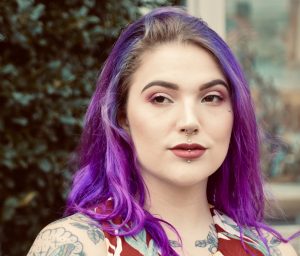
Waxing, a popular method of hair removal, has been practiced for centuries, offering individuals a smooth and hair-free skin surface. In this article delves into the duration of waxing results, addressing questions about how long waxing lasts, influencing factors, and tips for achieving optimal results.
Whether you’re a first-time waxer or looking to enhance your hair removal routine, this comprehensive guide caters to individuals seeking smoother, longer-lasting skin. Learn about the nuances of waxing, factors affecting regrowth, and discover valuable insights for a more effective and comfortable hair removal experience.
Key Takeaways
- The effectiveness of waxing, with results lasting between three to six weeks, stems from its ability to remove hair from the root.
- Factors influencing hair regrowth after waxing include the hair growth cycle, genetics, and hormonal fluctuations.
- The optimal hair length for waxing is around 1/4 to 1/2 inch, crucial for proper adhesion to the wax and efficient removal from the root.
- Waxing doesn’t stop hair growth permanently; it offers temporary removal, leading to finer and sparser regrowth over time.
- A comparison between waxing and shaving reveals differences in duration, regrowth characteristics, pain levels, and suitable body areas.
- The duration of waxing results varies across body areas, with facial waxing lasting 2 to 4 weeks, legs lasting 3 to 6 weeks, and underarms lasting 3 to 6 weeks.
- Tips for safe hair removal include skin preparation, method selection, patch testing, following instructions, sun protection, and regular moisturization.
How Long Does Waxing Last?
Waxing is renowned for providing longer-lasting results compared to traditional shaving. The effectiveness of waxing in keeping skin smooth is attributed to its ability to remove hair from the root. On average, the results of a waxing session can last anywhere from three to six weeks. However, individual factors such as hair growth rate and thickness may influence the duration of the results.
Factors Influencing Hair Regrowth:
Several factors play a role in determining how quickly hair regrows after waxing. These factors include:
- Hair Growth Cycle: The hair growth cycle consists of three phases—anagen (active growth), catagen (transitional phase), and telogen (resting phase). Waxing is most effective during the anagen phase, as it removes hair from the root. To be suitable for waxing, hair should ideally be around 1/4 to 1/2 inch (6 to 12 mm) in length.
- Genetics: Genetic factors contribute significantly to an individual’s hair growth patterns. The rate of hair regrowth and the thickness of hair are often inherited traits, impacting how quickly hair returns after waxing.
- Hormones: Hormonal fluctuations can affect hair growth. For instance, hormonal changes during puberty, pregnancy, or menopause can influence the speed of hair regrowth. Hormones also play a role in the thickness and texture of hair.
How Long Does Hair Have to Be to Wax?
The optimal length for hair to be waxed effectively is approximately 1/4 to 1/2 inch (6 to 12 mm). This length is crucial for the wax to adhere properly to the hair and ensure efficient removal from the root. Several factors influence the recommended hair length for waxing:
- Adhesion to Wax: For the wax to grip the hair effectively, it needs to be long enough for the wax to envelop it securely. If the hair is too short, the wax may struggle to adhere properly, resulting in incomplete hair removal and potentially causing more discomfort.
- Less Discomfort: Longer hair provides more surface area for the wax to grip, reducing the likelihood of breakage during removal. This, in turn, minimizes discomfort during the waxing process. Shorter hairs might break rather than be pulled out from the root, leading to a less satisfactory outcome.
- Avoiding Ingrown Hairs: Longer hair minimizes the risk of ingrown hairs post-waxing. When the hair is pulled out from the root, it has a more straightforward path to grow back through the skin’s surface, reducing the likelihood of becoming trapped beneath the skin.
How to Slow Hair Growth After Waxing?
While waxing does not permanently stop hair growth, certain practices may help slow down the regrowth process:
- Exfoliation: Exfoliating removes dead skin cells and may make it easier for new hair to break through the skin’s surface. Effective exfoliators for use after waxing include ready-made sugar scrubs enriched with ingredients like shea butter, Himalayan salt scrubs, or scrubs containing AHAs such as glycolic and lactic acids.
- Moisturization: Keeping the skin well-hydrated can promote a healthier hair growth cycle. Moisturized skin is less irritant, and hydrated hair may appear finer.
- Topical Treatments: Some over-the-counter or prescription products like FRÉNÉSIES Body and GiGi Slow Grow claim to inhibit hair growth. These products often contain ingredients that target the hair follicles, aiming to reduce the rate of regrowth.
Does Waxing Stop Hair Growth Permanently?
- Contrary to a common misconception, waxing does not stop hair growth permanently. Waxing only removes hair temporarily by pulling it out from the root. The hair follicle remains intact beneath the skin, and over time, new hair will grow. However, frequent waxing can lead to finer and sparser regrowth, making the hair appear less noticeable.
Waxing vs Shaving: Duration Comparison
Waxing and shaving are two distinct methods of hair removal, each with its own set of advantages and drawbacks. Here’s a comparison chart of body waxing vs. body shaving:
| Feature | Body Waxing | Body Shaving |
|---|---|---|
| Method | Removes hair from the root using hot or cold wax. | Cuts hair at the surface using a razor or electric shaver. |
| Duration of Results | Longer-lasting results (4-6 weeks) as it removes hair from the root. | Short-term results (1-3 days) as it only cuts hair at the surface. |
| Hair Regrowth | Hair regrows softer and may become sparse over time. | Hair regrows with a blunt edge, feeling stubbly. |
| Pain Level | Can be more painful, especially for first-time waxers. | Generally less painful, but may cause irritation or nicks. |
| Frequency of Treatment | Less frequent, as hair takes longer to regrow. | More frequent, as hair regrows quickly. |
| Skin Sensitivity | May cause redness, irritation, or ingrown hairs. | Can cause irritation, razor burn, or ingrown hairs. |
| Suitable Body Areas | Can be used on larger body areas like legs, arms, and back. | Suitable for various body areas, including face, legs, and underarms. |
| Cost | Professional waxing can be more expensive. | Shaving is generally a more cost-effective option. |
| Convenience | Requires a trip to a salon or expertise for at-home waxing. | Can be done at home with minimal equipment. |
| Preparation Time | Requires some preparation time and may need hair to be a certain length. | Quick and can be done spontaneously. |
| Risk of Injury | Risk of burns or skin damage if not done properly. | Risk of nicks, cuts, or irritation, especially with dull blades. |
| Ingrown Hair Risk | Can lead to ingrown hairs, especially if not exfoliating regularly. | Can also cause ingrown hairs, especially in sensitive areas. |
It’s essential to consider personal preferences, pain tolerance, and skin sensitivity when choosing between body waxing and body shaving. Both methods have their pros and cons, and the right choice depends on individual factors and desired outcomes.
How Long Does Waxing Last On Your Body?
Duration of waxing results on different parts of the body:
- Face: Facial waxing typically provides smoothness for about 2 to 4 weeks. However, the regrowth may vary based on individual hair growth patterns and hormonal factors.
- Legs: Waxing on the legs tends to offer longer-lasting results compared to shaving. On average, the effects of leg waxing can last between 3 to 6 weeks. The exact duration may depend on factors like hair growth rate and individual characteristics.
- Underarms: Underarm waxing results can last approximately 3 to 6 weeks. The underarm area is known for relatively faster hair regrowth, influenced by genetics and hormonal fluctuations.
- Back: Back waxing provides results that last around 3 to 6 weeks, similar to the legs. The duration may vary based on individual factors, but the removal of hair from the root contributes to a longer period of smoothness.
- Bikini Area: The bikini area typically experiences regrowth within 2 to 4 weeks after waxing. The frequency of waxing in this area is often influenced by personal preferences and the desired level of grooming.
-
Arms: Waxing on the arms offers smoothness for approximately 2 to 4 weeks. Like the face, the regrowth duration may vary based on individual factors, including genetics and hormonal influences.
Also Read: Skincare 101: A Complete Guide to Achieve a Healthy and Glowing Complexion
Tips to Safely Remove Hair
Effective hair removal can be achieved with safety in mind. Here are some tips to ensure a safe hair removal experience:
- Skin Preparation: Before hair removal, cleanse your skin to remove any dirt or oils. Avoid using lotions or creams, as they can create a barrier between the hair and the removal product.
- Choose the Right Method: Select a hair removal method that suits your skin type and preferences. Common methods include waxing, shaving, depilatory creams, and laser hair removal.
- Patch Test: Conduct a patch test with the chosen hair removal product to check for any adverse reactions or allergies. Apply a small amount to a small area of skin and wait for 24 hours to ensure compatibility.
- Follow Instructions: Read and follow the instructions provided with the hair removal product carefully. Different products have specific application and removal procedures, and adhering to these guidelines reduces the risk of irritation.
- Avoid Sun Exposure: If you’ve recently removed hair, avoid prolonged sun exposure to prevent skin sensitivity. Use sunscreen on treated areas to protect your skin from UV rays.
- Moisturize After Removal: Moisturize your skin after hair removal to soothe and hydrate. Opt for fragrance-free and hypoallergenic moisturizers to minimize the risk of irritation.
- Exfoliate Regularly: Incorporate gentle exfoliation into your routine to prevent ingrown hairs. Exfoliating removes dead skin cells, allowing hair to grow back more easily and reducing the risk of ingrown hairs.
- Hydrate: Stay well-hydrated to promote overall skin health. Drinking an adequate amount of water helps maintain skin elasticity and aids in the natural regeneration of skin cells.
How to Make Waxing Last Longer?
Extend the smoothness of waxed skin with these tips to prolong the results:
- Regular Maintenance: Stick to a regular waxing schedule to prevent hair from regrowing unevenly. Consistent waxing sessions lead to finer and sparser regrowth over time.
- Hair Length Matters: Ensure that your hair is the recommended length (1/4 to 1/2 inch) before waxing. This promotes effective hair removal, reducing the likelihood of breakage during the process.
- Post-Wax Care: Follow proper post-wax care, including avoiding hot showers, saunas, and intense physical activities for the first 24 hours. This helps prevent irritation and allows the skin to recover.
- Exfoliate Between Sessions: Regularly exfoliate the waxed areas between sessions to prevent the buildup of dead skin cells. This promotes smoother regrowth and reduces the risk of ingrown hairs.
- Moisturize: Keep your skin well-moisturized between waxing sessions. Hydrated skin is less prone to irritation, and moisturizing can contribute to a smoother skin surface.
- Avoid Sun Exposure: Minimize sun exposure on waxed areas, especially in the first 24 hours post-waxing. Sunscreen is essential to protect the skin and maintain its health.
- Consider Professional Services: Professional waxing services often provide longer-lasting results compared to at-home treatments. Trained aestheticians can ensure thorough hair removal and proper aftercare.
Also Read: Foot Peel Mask – Before and After
Final Thoughts
In conclusion, understanding the dynamics of waxing duration and effective practices contributes to a more satisfying hair removal experience. The article equips readers with insights into factors influencing regrowth, optimal hair length, and comparative analyses with other hair removal methods. Whether you choose waxing for specific body areas or adopt tips for safer removal, this guide empowers individuals to make informed decisions for achieving smoother, longer-lasting results.
FAQs
- Q: Does waxing permanently stop hair growth?
- A: No, waxing only provides temporary hair removal by pulling it out from the root. Hair will regrow over time.
- Q: How long should my hair be for effective waxing?
- A: Ideally, hair should be around 1/4 to 1/2 inch for proper adhesion to the wax and efficient removal.
- Q: Can hormonal changes affect waxing results?
- A: Yes, hormonal fluctuations during puberty, pregnancy, or menopause can influence the speed and thickness of hair regrowth.
- Q: What is the recommended frequency of waxing?
- A: Waxing is less frequent compared to shaving, as the results last longer. The frequency depends on individual hair growth.
- Q: Can waxing cause ingrown hairs?
- A: Yes, but regular exfoliation and proper aftercare can minimize the risk of ingrown hairs.
- Q: Does facial waxing last as long as leg waxing?
- A: Facial waxing typically lasts 2 to 4 weeks, while leg waxing can provide results lasting 3 to 6 weeks.
- Q: Are professional waxing services more effective?
- A: Professional services often provide longer-lasting results and ensure thorough hair removal and proper aftercare.
#WaxingTips #HairRemovalGuide #SmoothSkin #WaxingDuration #BeautyRoutine #GroomingTips #SkinCare101 #IngrownHairPrevention #HormonalInfluence #WaxingVsShaving #HairRegrowth #BodyWaxing #FacialWaxing #SummerReady #ProfessionalWaxing







No comment yet, add your voice below!